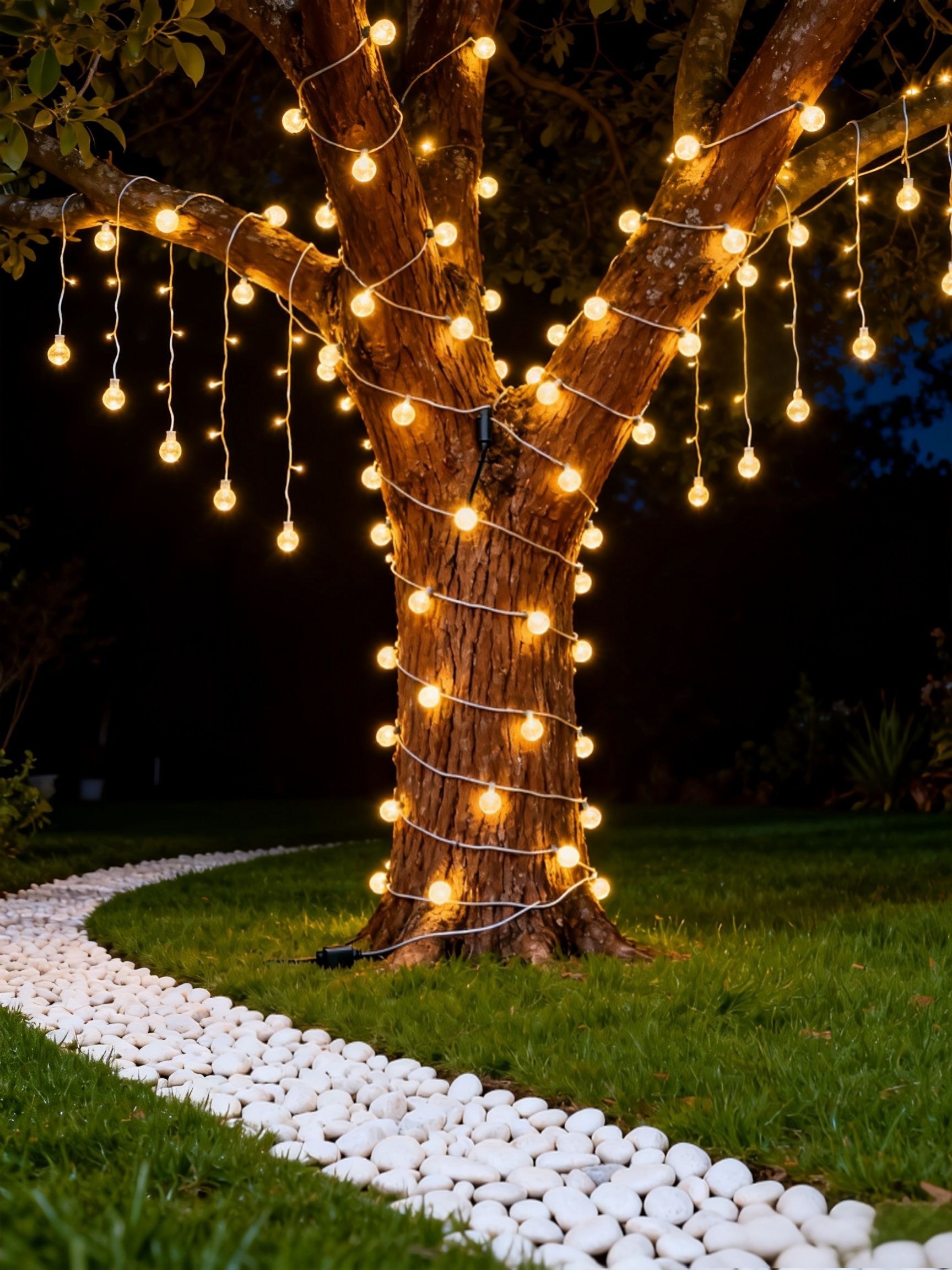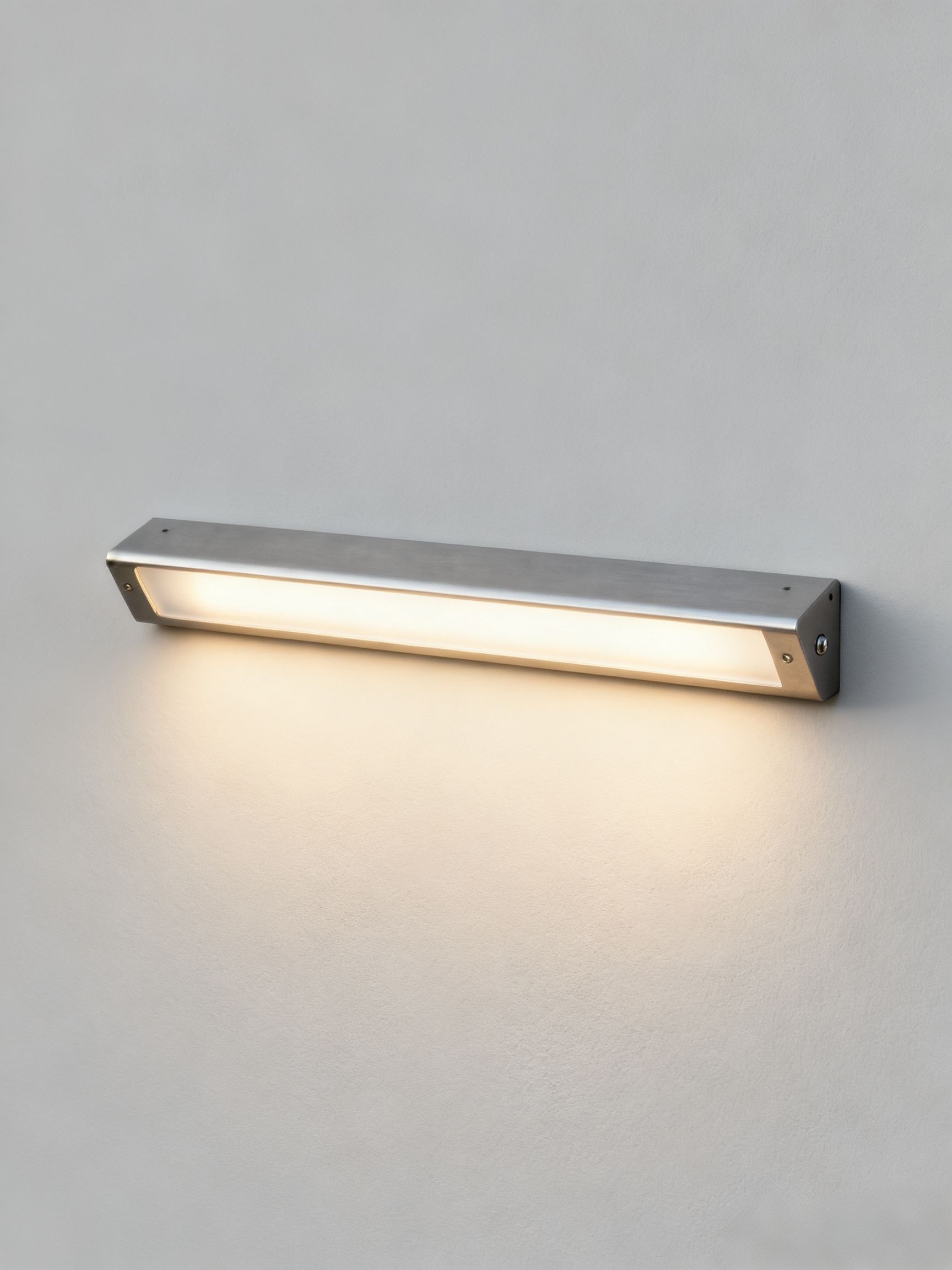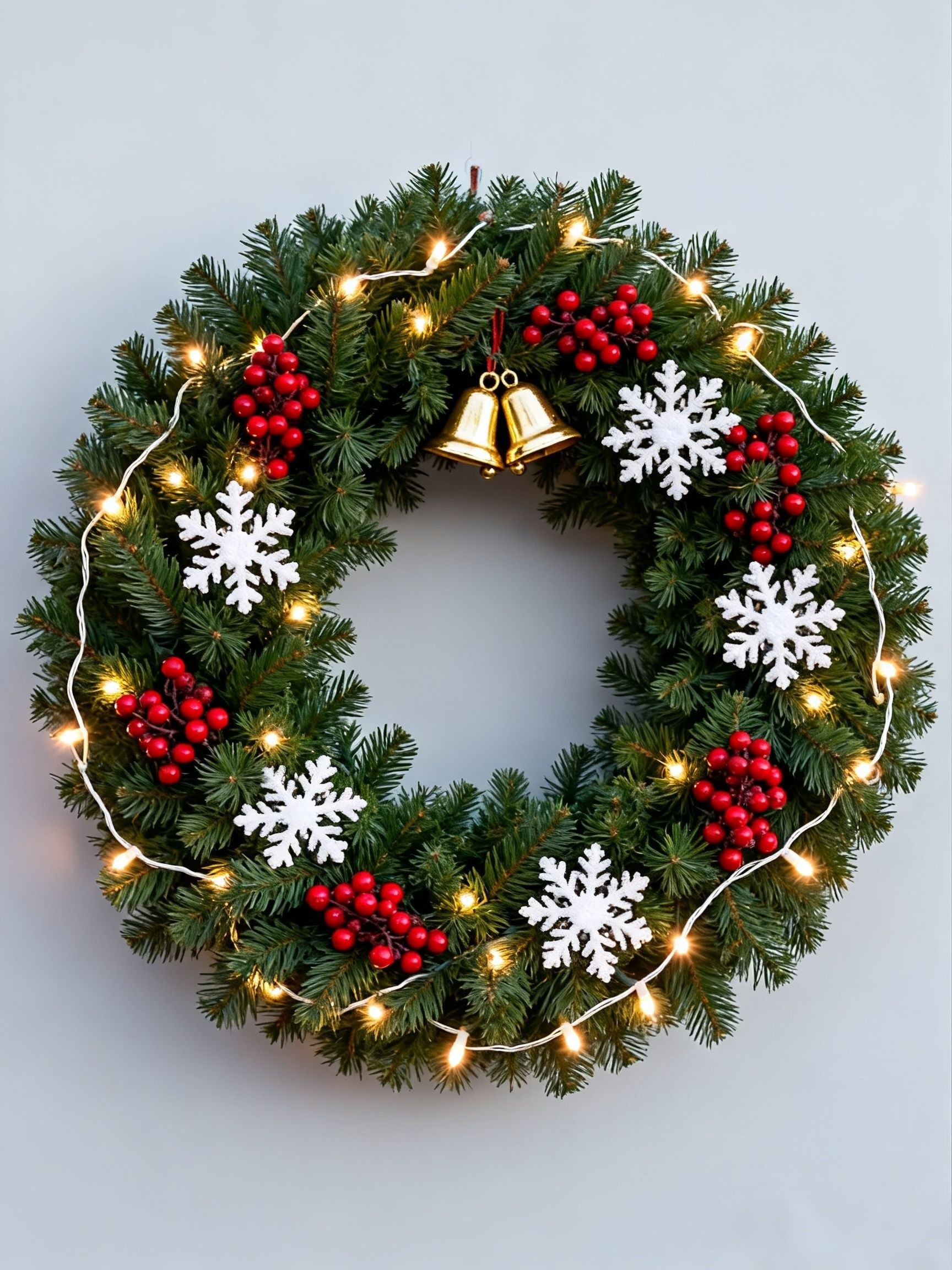I. How to Choose Outdoor Tree Lights: 6 Non-Negotiable Factors
Not all outdoor tree lights are created equal. The best options balance durability, aesthetics, and functionality—tailored to your tree type and intended use. Focus on these six critical factors to avoid common mistakes:
1. Bulb Type: LED Is Non-Negotiable for Outdoor Use
When it comes to outdoor tree lighting, LED bulbs are the gold standard—and for good reason. They outperform traditional incandescent bulbs in every key category: energy efficiency (using 75% less power), longevity (up to 50,000 hours vs. 1,000 hours for incandescents), and safety (staying cool to the touch, reducing fire risk around dry branches). Look for warm white (2700K-3000K) LEDs for a cozy, natural glow that complements most landscapes, or cool white (5000K-6000K) for a modern, crisp look. For festive occasions, RGB LEDs let you switch between colors to match holidays like Christmas (red/green) or Halloween (orange/purple).
Pro Tip: Opt for “commercial-grade” LEDs if you’re decorating large trees or want lights that withstand extreme weather (freezing temps, heavy rain) for years.
2. Power Source: Solar vs. Plug-In vs. Battery
Your power source depends on tree location, usage frequency, and brightness needs:
- Solar-Powered: Ideal for trees far from outlets (e.g., garden borders). They charge during the day and auto-light at dusk, saving energy. Look for models with 1000mAh+ lithium-ion batteries for 8-12 hours of runtime. Best for ambient lighting (50-100 lumens) rather than bright focal points.
- Plug-In: Reliable for high-brightness needs (200+ lumens) or year-round use. Choose UL-listed extension cords rated for outdoor use (look for “W” on the cord label) to avoid water damage. Use a timer to reduce energy waste and extend bulb life.
- Battery-Powered: A portable option for temporary displays (e.g., parties). Use rechargeable lithium batteries to cut costs, but note they’re less practical for long-term use due to frequent replacements.
3. Waterproof Rating: IP65+ for Uncompromised Durability
Outdoor lights face rain, snow, and dew—so waterproofing is non-negotiable. Check the IP (Ingress Protection) rating: IP65: The minimum standard for outdoor use—resists direct rain and dust. Suitable for most gardens and trees.IP67: Submersible in 1m of water for 30 minutes—ideal for wet climates or low-lying trees prone to puddling.Warning: Avoid “splash-proof” (IP44) lights for exposed trees—they’ll fail in heavy rain. Ensure the entire system (bulbs, wires, connectors, and power packs) has the same IP rating.
4. Wire Material: Flexible & Weather-Resistant
The wire holding your lights needs to wrap around branches without breaking or damaging the tree. Look for: Copper or Tinned Copper Wires: Flexible and corrosion-resistant—perfect for wrapping around thick or twisted branches.PVC or Silicone Jackets: Protects wires from UV damage, freezing, and cracking. Silicone is more durable than PVC for extreme temperatures.For small trees or delicate branches, choose thin “fairy light” wires (22-24 gauge). For large trees, use thicker 18-20 gauge wires to support heavier bulb loads.
5. Light Style: Match to Tree Type & Ambiance
Different light styles complement different trees and goals: String Lights: The most versatile option. Use mini bulbs (5mm) for delicate trees (e.g., cherry blossoms) and larger C7/C9 bulbs for mature oaks or pines. Spiral wrapping creates a classic, full look.Net Lights: Quick to install on bushy trees (e.g., boxwoods) or shrubs—just drape over the canopy for even coverage.Spotlights/Floodlights: Mount at the base of large trees to uplight the trunk and canopy—highlights texture (e.g., oak bark) and creates dramatic shadows.Branch Lights: Designed to clip directly onto branches—mimic “glowing leaves” for a natural, organic effect.6. Safety Features: Protect Trees & Your HomeOutdoor lighting carries unique risks—prioritize these safety features: Low Voltage (12V-24V): Safer than line voltage (120V), especially if kids or pets play nearby. Requires a transformer, but reduces shock risk.Fuse Protection: Prevents overloads that cause fires—look for fuses in plugs or power packs.Tree-Friendly Clips: Avoid nails or staples that damage bark (and invite disease). Use soft plastic or Velcro clips that hold lights securely without cutting into the tree.II. 15+ Creative Outdoor Tree Light Ideas for Every OccasionOutdoor tree lights aren’t just for Christmas—they can elevate your landscape year-round. Here are our favorite ideas for different trees, seasons, and moods:
1. Year-Round Garden Ambiance
- Mature Shade Trees (Oaks, Maples): Use warm white string lights wrapped in a spiral from the base to the canopy (10-15cm spacing between wraps). Add 2-3 uplights at the base to highlight the trunk’s texture—perfect for evening barbecues.
- Flowering Trees (Cherry, Dogwood): Wrap mini LED fairy lights around thin branches to accent blooms in spring. Choose cool white to make pink/white flowers pop, or warm white for a romantic glow.
- Bushy Shrubs (Boxwood, Holly): Drape green net lights over the top—they blend in during the day and create a “glowing cloud” effect at night. Add a few spotlights to highlight red berries in winter.
2. Holiday & Seasonal Decor
- Christmas: For evergreens (pines, firs), use a mix of C7 warm white lights (wrapped around branches) and red LED string lights (draped from the top for a “waterfall” effect). Add a star topper and sync lights to a timer for 6-8 hours of nightly glow—mirroring iconic displays like Singapore’s Orchard Road, where 108 trees are adorned with 3.1km of festive lights .
- Halloween: Wrap orange and purple string lights around bare tree branches (fall/winter) for an eerie effect. Add fake spider webs between branches and use blacklight LEDs to make white decor glow.
- Summer Nights: Use color-changing RGB lights on palm trees or citrus trees—sync to music for pool parties. Float waterproof LED orbs at the base to reflect light off leaves.
3. Special Events & Accents
- Weddings/Anniversaries: Wrap ivory fairy lights around apple or pear trees (in bloom) and hang crystal prisms from branches—they refract light into rainbows. Use warm white uplights to frame the tree as a ceremony backdrop.
- Pathway Guide: Line small trees along your garden path with low-profile string lights—space them 1-2m apart to create a safe, glowing walkway. Choose solar-powered models to avoid cord clutter.
- Statement Tree: Turn a large central tree into a focal point with 100+ LED bulbs (mix of sizes) and add a “tree skirt” of lights at the base. Use a remote control to switch between steady glow and slow fade modes.
III. Step-by-Step Installation Guide: Safe & Stunning Results
Poor installation leads to tangled wires, damaged trees, and uneven lighting. Follow these steps for a professional look:
- Plan & Measure: Calculate how many lights you need—measure the tree’s height and circumference. A general rule: 100-150 mini bulbs per 1.5m of tree height. For large trees, add 50 bulbs per additional meter.
- Test Lights First: Plug in or charge lights before installing to avoid climbing up/down to replace dead bulbs. Replace any flickering or dim bulbs immediately.
- Start at the Base: For string lights, wrap the wire around the trunk 2-3 times to secure it, then move upward in a spiral. Keep spacing consistent (10-15cm) for even coverage. For uplights, position them 0.5-1m from the trunk at a 45° angle to highlight the canopy.
- Secure Gently: Use tree-friendly clips every 30-40cm to hold wires in place—never nail or staple into bark. For thin branches, wrap wire loosely to allow growth.
- Hide Cords: Bury plug-in cords under mulch or use cord covers to blend with grass. For solar models, place panels in direct sunlight (6+ hours/day) and angle them toward the sun.
- Set a Timer: Program lights to turn on at dusk and off at 10pm—saves energy and extends bulb life.
IV. Maintenance Tips: Keep Lights Shining for Years
With proper care, quality outdoor tree lights can last 3-5 years. Follow these maintenance rules:
- Clean Regularly: Wipe bulbs and wires with a dry cloth every 1-2 months to remove dust and debris—dirty bulbs reduce brightness by 30%.
- Inspect for Damage: Check wires for cracks or fraying before each use. Replace damaged sections immediately to avoid short circuits.
- Store Properly in Off-Seasons: For seasonal lights, remove them carefully (avoid pulling wires) and wrap around cardboard tubes. Store in a dry, cool place—never leave lights on trees during heavy snow or ice storms.
- Prune Branches: Trim overgrown branches before installing lights—prevents wires from being crushed and improves light distribution.
- Replace Batteries/Solar Panels: For solar models, replace batteries every 1-2 years (when runtime drops by 50%). Clean solar panels monthly to maintain charging efficiency.
V. Frequently Asked Questions (FAQ)
- Q: Will outdoor tree lights damage my tree?A: No—if installed correctly. Use soft clips, avoid wrapping wires too tightly (leave room for growth), and never use nails/staples. Remove lights every 6-12 months to let bark breathe.
- Q: How many lights do I need for a 3m tall tree?A: 200-300 mini LED bulbs (5mm) or 50-75 C7 bulbs. For a bushy tree, add 50-100 extra bulbs for full coverage.
- Q: Can I leave outdoor tree lights on all night?A: It’s not recommended—long-term use wastes energy and increases fire risk. Use a timer for 6-8 hours of nightly use.
- Q: Are solar tree lights bright enough for large trees?A: For ambient lighting, yes—but for bright focal points, pair solar string lights with 1-2 low-voltage plug-in uplights. Look for solar panels with 20%+ efficiency for better performance.
- Q: How do I fix a section of tree lights that’s not working?A: Check for loose bulbs or connectors first. If that doesn’t work, use a light tester to find the dead bulb—replace it with the same voltage/capacity bulb.
Click to customize the product






